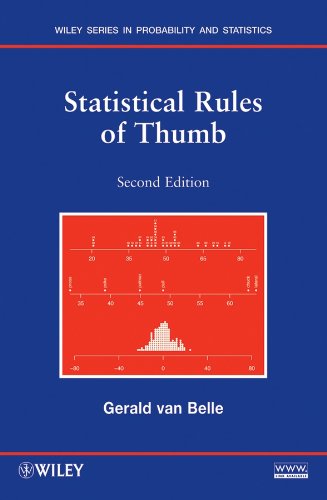Statistical rules of thumb pdf free
Par collins marie le mercredi, juin 29 2016, 14:41 - Lien permanent
Statistical rules of thumb. Gerald van Belle

Statistical.rules.of.thumb.pdf
ISBN: 0470144483,9780470144480 | 305 pages | 8 Mb

Statistical rules of thumb Gerald van Belle
Publisher: Wiley
Here are some rules of thumb I've compiled for graduate students studying applied statistics: * Consider the underlying science. This would also ensure confidence in the calibration employing the metrological and statistical practices recommended. The marketer does a statistical test of significance and gets a p-value of 0.04 (remember your business stats class here…). A site dedicated to reporting out references for the common rules of thumb we often talk about but rarely remember who said it. The interesting scientific questions are not always questions statistics can answer. On the other hand, statistics based systems require a then the cost of thesaurus creation needs to be added. This difference was also statistically significant at 72 hours (day 3). Despite decades of careful data collection and mathematical and statistical research, on many large questions we have little more than rules of thumb. They also claim that statistics based systems are more accurate. Haldane cites work on decision-making by the psychologist Gerd Gigerenzer. Maybe the ongoing nature of the BP blowout, leading to repeated rebuffs of all those suggestions that aren't likely to work, will teach some of the public that such rules of thumb exist and are useful. Version B Source: Statistical Rules of Thumb by Gerald van Belle; http://vanbelle.org/. Again, the dual foci of MHCA, for the time being, is ongoing statistical Research & 'comprehensive Resource servicing' in behalf of LLLCommunity owners/operators nationwide, likely including Canada. Companies advocating the statistics system hold that editorially maintained rule bases take a lot of up-front investment and higher costs overall. These two questions are answered by practical and statistical significance, respectively. Hourly rates and units per hour are based on field experience and industry rules of thumb. Instead of continuously testing or relying on generic rules of thumb, you can calculate the needed sample size and statistical significance very easily. The main argument of the author is that the evolutionary process has led humans to develop “rules of thumb” or “heuristics” that tend to lead to efficient decision making processes.